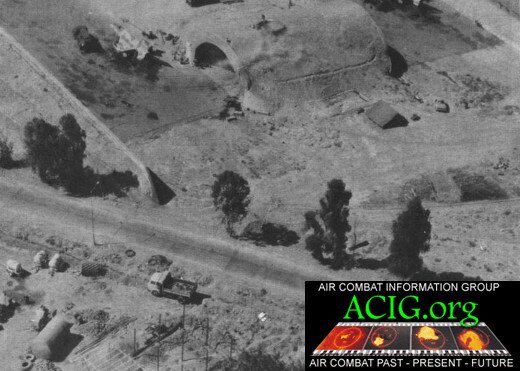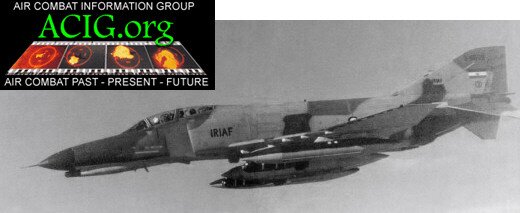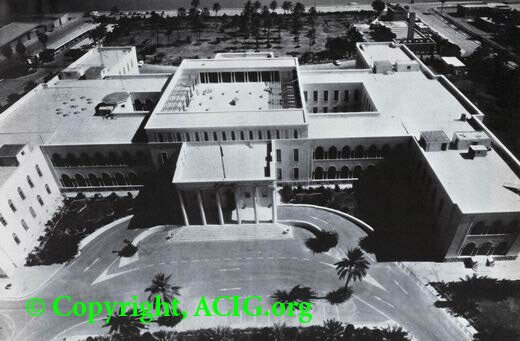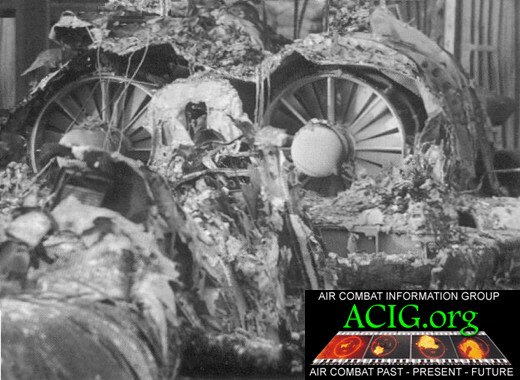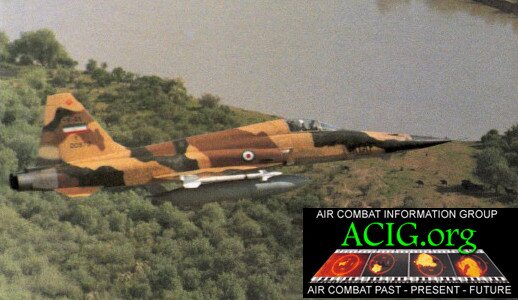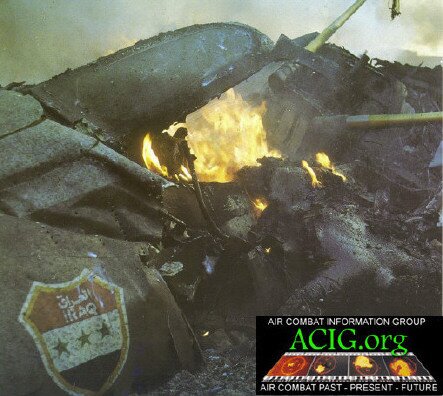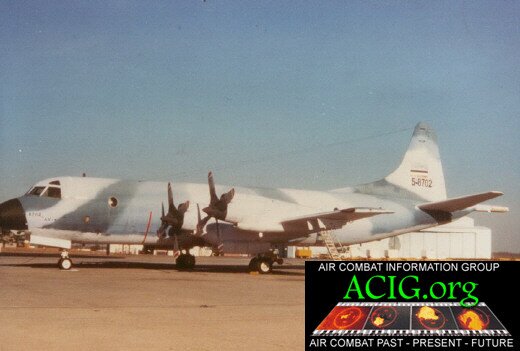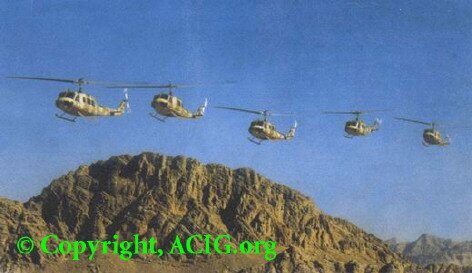|
From ACIG.org Arabian Peninsula & Persian Gulf Database
During the 1970s, both Iran and Iraq invested heavily on their air forces, creating not only two of the largest and most powerful air arms in the Middle East, but also worldwide. The circumstances and the results of these investments remain largely unnoticed, just like the details about the deployment and operations of both air forces in the long and bloody war of attrition between the two countries, fought between 1980 and 1988. In 1960s and 1970s, Iran was a firm US ally; consequently, the Imperial Iranian Air Force (IIAF) was developed along the USAF lines, and relied on US threat perceptions, doctrine, strategies, tactics, purchasing, production, as well as training policies. Everything in the IIAF, its air power doctrine and capabilities, was tailored for supporting a joint US-Iranian operation against a possible Soviet invasion of Iran from the north. Even the traditions and markings of the IIAF strongly resembled those of the US Air Force (USAF). A chain of huge air bases and a widespread early warning system were erected against the USSR. Consequently, the self-sufficient structure of the IIAF was weak during the 1970s, and was planned to be developed during the 1980s. Instead, during the 1970s, Iran was turned into a huge forward base for local as well as the US forces, where huge stocks of spare parts and weapons were piled. Partially, such a policy was also influenced by the fact that after learning about Israeli problems in 1973, the Iranians began to order additional amounts of equipment, spare parts and weapons, which could enable them to fight an intensive war for many months without any external help. The IIAF’s strategic stocks, managed by the costly Peacelog automated inventory system, became so huge that even in 1986 the emerging Islamic Republic of Iran Air Force (IRIAF) was still using bombs and missiles purchased during the 1970s – even if expired shelf-lives of most items caused operating difficulties. By constantly taking part in joint exercises with the USAF, USN, RAF and the Turkish and Pakistani air forces, in addition to sending its best crews and pilots for training courses to the US and Israel, the IIAF honed the skills of its chain of command, pilots, and technical personnel to highest possible degrees. Iranian reconnaissance assets were also involved in constant monitoring operations along the Soviet borders, together with USAF/CIA personnel and equipment. The IIAF was trained to function as a member of a team with large and far-reaching objectives, and so had to keep the pace. There were some problems, like lack of proper EW systems and gaps in radar coverage of the Iranian airspace, as well as a lack of effective anti-shipping systems, but they were recognized and measures were taken to rectify them. During the late 1960s and through 1970s, the IIAF took delivery from the USA up to 104 Northrop F-5A/Bs Freedom Fighters, and then continued with purchases of 32 McDonnell Douglas F-4Ds, 177 F-4Es, 165 F-5E/Fs, at least 20 RF-4Es (only 16 of which were delivered “officially”), and 80 Grumman F-14As, as well as a large fleet of Boeing 707-3J9C tankers, Lockheed C-130E/H Hercules transports, and a number of Boeing 747-2J9C strategic transports. By 1979, up to 300 F-16A/Bs, seven Boeing E-3A AWACS aircraft and other assets were on order, negotiations for 75 more F-14As were due to start, and the IIAF was also to build the most comprehensive training installations outside the USA, very similar to those used for the Red Flag exercises. Training began with a fast pace, in the US, and young Iranian officers started undergoing F-16 flying and AWACS control courses. Despite having only 450 combat aircraft, and planning to get around 400 more by 1982, bases and facilities built in Iran could easily accommodate and support as many as 3,000 fighter and support aircraft. For comparison, when the US deployed its forces to the region after the Iraqi invasion of Kuwait, in late 1990, it stationed around 2,400 aircraft on various air bases – spread in five countries in the region – as well as on aircraft carriers, within six months. Interestingly this number peaked at 2,790 aircraft (very close to the 3,000 number) on February 24, 1991. The infrastructure for such an operation was not available, however, and had to be hastily improvised: on most air bases, the US, British, and French aircraft initially stood exposed to a harsh climate, and even if after several months a large number of makeshift shelters were built, most of the aircraft were not properly protected for the duration of their deployment in the area, while most airfields were simply overtaxed. No such problems would be encountered, if bases in Iran were available to the Gulf alliance. Iraq, to the contrary, could not count on any such support. Although the Iraqi Air Force (IrAF) is the oldest Arab air force (established already in 1924), the policies of the country’s leadership increasingly isolated it from the outside world. For more than 30 years, the IrAF was organized, trained, and equipped by the British, and the British influenced every aspect of the Iraqi air force structure and operations, including the “air policing” of Kurdish areas in northern Iraq. After the fall of the monarchy, in 1958, the IrAF began to increasingly equip itself with Soviet-built aircraft. To many observers, it was “logical” therefore to describe the IrAF as an entity “operating according to the Soviet doctrine,” while the fact was that after purchasing over 60 Hawker Hunters during the early 1960s, the Iraqis were never satisfied with what they had got from the Soviets, and tried hard to get more hardware from the West. For different reasons, however, deals for SEPECAT Jaguars, BAe Hawks, and Dassault Mirage 5s were all spoiled, and it was not before 1977 that Iraq finally ordered its first large numbers of Western combat aircraft and helicopters - from France. The isolation from the outside was felt also in training, operations, and capabilities of the IrAF. Under constant observation and heavy pressure by the ruling regimes, the IrAF became at least as much a victim of the usual tendency of its officers to mix into the politics, as it suffered from being equipped with second-class hardware supplied by the USSR, which simply would not make it more capable of defending the huge Iraqi airspace. This was one of the reasons why the IrAF leaned heavily on Indian Air Force (IAF) – instead on the Soviets – for training during the 1970s and a better part of 1980s. This changed only to a slight degree in 1979, when a massive contract was signed with Moscow, covering delivery of over 200 combat aircraft and helicopters, including the first Mi-25 Hinds and MiG-25 Foxbats. The purchase of the latter, namely, was conditioned by the Soviets on the presence of a large number of their advisors, which were to keep the Foxbats – stationed at the Shoaibah AB, near Basrah – under control for a number of years to come.
The IrAF had also some limited combat experiences from a few wars against Israel, and the continuous low intensity fighting against the Kurdish insurgency. The Iraqis barely learned any important lessons from the war in 1967, but very closely observed the October War of 1973, in which several IrAF squadrons took part as well. The Iraqis understood very well that under given circumstances, they did not have any choice but to form an air defense command along the Soviet lines, equipped with almost 100 Mikoyan MiG-21s, over two hundred SA-2, SA-3 and SA-6 SAM sites, and a large number of anti aircraft guns. Despite the size of their country, and the long borders with their neighbors, however, the Iraqis could merely concentrate their SAM sites and point defense interceptors around the vital installations: between such areas, over 90% of the Iraqi airspace was not permanently defended. The rest of the air force, was equipped with MiG-23s – which were a huge disappointment for the Iraqis – limited-capability Sukhoi Su-7s (mainly used for training) and Su-20/-22 attack planes, while a single bomber wing flew Ilyushin Il-28s, and Tupolev Tu-16s and Tu-22s. Thus, while by 1979 the IIAF was an excellent force on the verge of becoming a power of strategic proportions equipped with first-class weapons and systems, the IrAF was still a small tactical asset, the most modern combat aircraft of which was MiG-23.
The chain of events, which finally led to the Iraqi invasion of its eastern neighbor, was directly initiated by the Islamic revolution in Iran, in February 1979, which followed a series of unrests throughout the country, starting in 1978. The demise of the Shah’s regime had tremendous consequences for the IIAF, which not only lost its name, but also its whole command staff. Constant purges through 1979 and 1980, and plans by the new regime to “cleanse” the air force – suspected of being “royalist” and “disloyal to Islam” – not only caused hundreds of the air force officers to be purged, imprisoned or executed, but finally threatened even the bare existence of the whole service. This was certainly one of the most influential reasons for the Iraqis to attack Iran; it was clear, namely, that the IrAF had no chances against an intact and fully operational Iranian air force. Although the combat operations during the First Persian Gulf War were “officially” started on the afternoon of September 22, 1980, intensive fighting along the central sector of the Iraqi-Iranian border erupted already on September 4, and until today, Iraqis consider this date as the starting point of the war. During most of September, both the IrAF and the IRIAF supported ground forces with a large number of reconnaissance and combat sorties. Far better equipped and trained Iranians caused extensive losses to the Iraqis, even if their operations were hampered by technical problems, and also by the need to simultaneously fight an Iraqi-supported Kurdish revolt in the northwest Iran – which was costly in terms of helicopters, aircraft, and crews lost. Despite losses, the lack of any powerful Iranian response during early skirmishes, the reports on the dreadful condition of the Iranian armed forces, and the clandestine support from the US (which delivered blueprints of the Iranian air defense system to Baghdad), Saudi Arabia, and Kuwait, ensured Iraqis that a war against Iran could be successfully initiated and quickly concluded probably with the crushing of the new regime in Tehran itself. Therefore, on the afternoon of September 22, 1980, the Iraqis initiated a war against Iran with a massive armored onslaught into the southwestern province of Khuzestan, and a simultaneous two-wave attack by the IrAF against most important IRIAF air bases in western and central Iran. The air offensive – flown by heavily armed aircraft but lacking the needed capabilities, and pilots who lacked proper training – turned into a complete failure, and not even another try, on the following morning, could preclude the IRIAF to respond in full power. Only four hours after the first Iraqi attack, namely, four Iranian F-4 Phantoms bombed the Rashid AB, in southern Baghdad, and – utilizing IIAF-era contingency plans – on the morning of September 23, no less than 140 Iranian F-4D/E Phantoms, F-5E/Fs and F-14s – responded by an aerial onslaught against Iraq. Thus a relative “aerial siege” of Iraq was initiated, which was to last for almost a week, and during which the IRIAF continued to put large formations of fighter-bombers over Iraq each morning, systematically destroying Iraqi oil-production and war-fighting capabilities, and also forcing most of the IrAF into exile, in Jordan and Saudi Arabia. Equipped with ECM pods, BL.755 CBUs, and the Mk.80 series of bombs, and using specially reconnoitered ingress corridors, the Iranians had not much problems in flying almost completely undisturbed deep into Iraq. If the IrAF managed to intercept any formation, its fighters were usually detected in time, and shot down in large numbers. On September 25, for example, no less than five MiG-21s and MiG-23s were shot down in a single air combat near Baghdad, in exchange for two damaged Phantoms.
When the IrAF tried to attack deep into Iran, even if flying along „blind spots“ of the Iranian early warning radar system - the Iraqi formations were frequently intercepted, and several times shot down to the last plane. Especially units equipped with the MiG-23s suffered severely. After almost a week of intensive attacks against Iraqi targets, the IRIAF had to change its strategy, as the Iraqi Army was now driving almost 60km deep into southern Iran putting several Iranian cities and important air bases under threat, while the list of the targets in Iraq was almost exhausted, and bad weather hampered many of the operations. Consequently, the Iranians threw the whole power of their air force to stop the Iraqis. This task was completed by late October 1980, albeit at a very heavy price, as a lack of proper EW systems, and even chaff and flare dispensers, became evident. The Iraqi invasion, however, saved the lives of numerous Iranian unattached officers, who were released from Islamic regime’s prisons, in order to help in the fighting. Together with other skilled personnel, these pilots were to become the most important asset at the hands of the IRIAF for the rest of the war.
By January 1981, the Iranians already felt capable of starting a counteroffensive, but their first large offensive, the operation Howeizeh, initiated on January 5, ended in failure and caused considerable losses in equipment of the regular forces. As a result, for the next few years the IRIAF and the Army were not to participate intensively in any other offensive operations, except in support of the Islamic Revolutionary Guards Corps (IRGC). Nevertheless, this support often proved indispensable, so during the retaking of Khoramshahr, in September 1982, and the final expulsion of the Iraqis from Iran, in the Spring of 1982, the IRIAF – but also the Iranian Army Aviation (IRIAA) – destroyed huge amounts of Iraqi equipment. The IrAF, to the contrary, after a short recovery in spring and summer of 1981, was at the end of its strength by late 1982, and only huge urgent deals with China – with Egyptian and Saudi help – and the USSR, which re-started delivery of the replacement equipment (stopped earlier in protest to the Iraqi invasion of Iran), saved it from annihilation. Therefore, through 1983, the IrAF was foremost preoccupied with reorganizing, while the IRIAF tried to conserve its remaining strength – by limiting cross-border sorties – and organize first large clandestine shipments of spare parts from the US, as it was clear now that the war was to last for a conceivable future.
By 1984, the Iranian ground forces were reorganised well enough for the IRGC to start its first strategic offensive – the Operation Kheibar – which included a swift crossing of the Howeizeh marshes with the large-scale help of IRIAA helicopters, and the capture of the Majnoon Islets, with the eventual target of severing the communication lines between Baghdad and the second largest Iraqi city, Basrah. Despite increasing problems with the maintenance of its aircraft – foremost caused not by the lack of spare parts, but by intensive operations which precluded usual maintenance schedules – the IRIAF supported these operations by at lest 100 combat sorties per day on average, which was simply not enough. On the other side, as the Iranian battlefield air defences were not effectively developed and repaired, the IrAF and the IrAAC had their field days hunting Iranian troop concentrations in the barren terrain of the southern front.
The same year saw also an intensification and internationalization of the so-called Tanker War, which was going on at a slow pace already since autumn 1981. It now saw both sides attacking Persian Gulf shipping. This development was one of the most brilliant Iraqi strategic moves during the war. Even if the Iraqi attacks against the Iranian shipping were very costly – both in terms of expensive equipment required, and immense technical and tactical problems, which caused suffering losses for hardly any results – and never totally successful, it internationalized the conflict which could only be to Iraqi advantage. Namely, by ordering their anti-shipping weapons from France, and later by gaining support for such operations from the United States, Kuwait, and Saudi Arabia (as well as Bahrain and Qatar, which permitted Iraqis to use their airspace), the Iraqis were to assure not only more help and support for them, but also to cause direct confrontation between Iran and the US – which was one that Iran had no winning chance. In addition, it forced Iranians to concentrate a considerable amount of their high value assets – much-needed to support the land offensives – on defending shipping and offshore oil facilities.
The Tanker War was also the dominant feature in the air war during 1985; a year in which the IRIAF was again reinforced by more clandestine deliveries of spare parts and weapons from the US and Israel – a tendency which was to increase in 1986 and 1987. Reinforced, combat experienced, and better trained than before, the Iranians then prepared their most successful offensive of the war, the Valfajr-8, the target of which was the Faw Peninsula, in southern Iraq. The offensive was initiated on the evening of February 9, 1986, and was instantly a huge success, with Iranians not only capturing the whole peninsula and the port of Faw, but also badly mauling the Iraqi Army and air force. The IRIAF and the IRIAA conducted intensive operations as well, adding to the carnage on the battlefield, but also flying again deep into Iraq, including a raid against the H-2 pumping station – over 600km deep inside Iraq, which was hit on February 15, by four Phantoms that flew the operation without the help of in-flight refueling. Downing of around 45 Iraqi aircraft - foremost by HAWK SAMs and Oerlikon anti-aircraft guns - was another turning point in the Iranian air defense strategy, a strategy that had begun to transform into an effective counter to the increasing Iraqi air activity towards the end of the war.
For the rest of 1986, and until the Spring of 1988, the IRIAF’s efficiency in air defense constantly increased, as not only new or repaired weapons, but also new and more innovative tactical methods were brought to bear. For example, the Iranians would integrate – loosely – their SAM sites and interceptors to create true “killing fields,” to which dozens of Iraqi planes would be lost (which in turn caused reports in the West, about the IRIAF using F-14s as “mini-AWACS”). The IrAF reacted by increasing the sophistication of its equipment, incorporating a massive use of modern ECM pods, chaff, ARMs – and chemical weapons.
By that time, it became clear to the IRIAF that it could not win the war, despite its sophisticated equipment, as it lacked enough equipment and personnel to sustain a war of attrition that developed, and would not be permitted to lead an outright onslaught against Iraq. The IrAF, to the contrary, lacked truly modern equipment and experienced pilots. This was now to change, as after pleads from the Iraqi military structure, Iraqi dictator finally decreased the political influence on every-day operations, and left the fighting of the war to his combatants. In addition, the Soviets – due to their own financial problems – started delivering more advanced aircraft and weapons to Iraq, while the French considerably improved the training of the flying crews and technical personnel, and continuously introduced new methods for countering Iranian weapons and tactics. The results of such change were increasingly felt by the Iranians from late 1986, through the whole 1987, and until the end of the war, as the IrAF moved on a comprehensive campaign against the Iranian economic infrastructure. The main Iraqi target now was the destruction of Iranian war fighting capability, and the IrAF – much reinforced by more modern weapons and equipment delivered from France, USSR, and even the US – was to succeed in this task, regardless of immense losses it suffered in exchange. By late 1987, the IrAF could count on direct US support for the conduct of its long-range operations against Iranian infrastructural targets, and oil installations deep into the Persian Gulf. USN ships actively tracked any movements of Iranian shipping and defenses, and reported them to Iraqis. This tendency went so far that in February and March 1988, in several occasions when the USN did supply targeting information to the Iraqi air force, but did not warn their aircraft of Iranian interceptors’ presence, the Iraqis would each time suffer considerable losses. A good example for such events was the massive IrAF strike against Khark island, flown on March 18, 1988, in which the Iraqis destroyed two supertankers, causing immense loss of lives, but also themselves losing five aircraft to Iranian F-14 Tomcats, including two Tupolev Tu-22Bs, and one Mikoyan MiG-25RB.
After this catastrophe, the IrAF never again flew any large-scale raids into the Persian Gulf; however, such tactics were no more necessary, as now the USN was to directly confront the Iranians – a move important also because it forced the IRIAF to re-deploy considerable assets from fighting Iraq, as well as from defending important economic assets, to the Strait of Hormuz area. This could also be seen by the clerical leadership, who had sent the IRGC to attack heavily defended Iraqi positions around Basrah, in February and December 1987, resulting in immense losses, as a face-saving opportunity. The simultaneous end of the clandestine US support for Iran coincided with the increasing pressure by the IrAF against the Iranian economy. Iran, was now rapidly running out of economic strength and will to fight. In that sense, the American Operation Praying Mantis, undertaken on April 18 1988 simultaneously with the Iraqi offensive, which liberated the Faw Peninsula from Iranian occupation, not only badly mauled the Iranian Navy, but also made it clear to the leadership in Tehran that the conflict had to be ended sooner rather than later. The downing of the Iran Air Airbus A300, on July 3, 1988, heavy losses of the IRIAA during the fighting on the central front, and the downing of two F-14As by Iraqi Mirage F.1EQ-6s, on July 19, were in that sense only some of the last acts in a war, which was indeed lost and won – if the fact that the Iraqi regime survived a war determined to be ended with its demise, can be considered as a victory – by air power, or lack of the same.
The experiences from the use of airpower during the Iran-Iraq War are of immense importance, yet completely ignored. It was the first war in which both sides used a large number of medium-range air-to-air missiles (MRAAMs). Even more so, it was the first war in which long-range air-to-air missiles (LRAAMs) – precisely, the AIM-54A Phoenix – were used, with huge success – to engage tactical fighters. It was also the first war, in which an air force – the Iraqi – started to fly in small formations at medium levels and deploy stand-off weapons in huge numbers in order to evade ground-based air defenses, instead of penetrating at very low levels. The Iran-Iraq War was also the first war in which both fighting sides attacked each other’s nuclear reactors, and in which the surface-to-surface missiles (SSMs) were introduced by both sides as weapons of terror. It was an air war in which both sides made extensive use of all possible means of the electronic warfare; by 1988, the use of ECM – or the lack thereof – was decisive factor and a matter of life and death of many fliers on both sides. The First Persian Gulf War was also the first conflict in which armed UAVs were deployed – by Iran – to attack land targets. And, finally, for the first time in anger, very-high-flying aircraft were shot down at their maximum operating altitude using LRAAMs. Despite all, the air war between Iraq and Iran was so far one of the least known, worst researched, and most ignored and misunderstood air wars ever. The most likely reason for this fact is that the war was used as a testing ground for a huge number of diverse weapons systems, many of which debuted nowhere near as expected or advertised by their manufacturers, as well as the fact that both the West and the former Soviet Union completely underestimated the capabilities of the two invloved sides to wage a high-tech war, instead prferring to concentrate on some of the best known and most successful propaganda-campaigns of the 20th Century.
© Copyright 2002-3 by ACIG.org |



